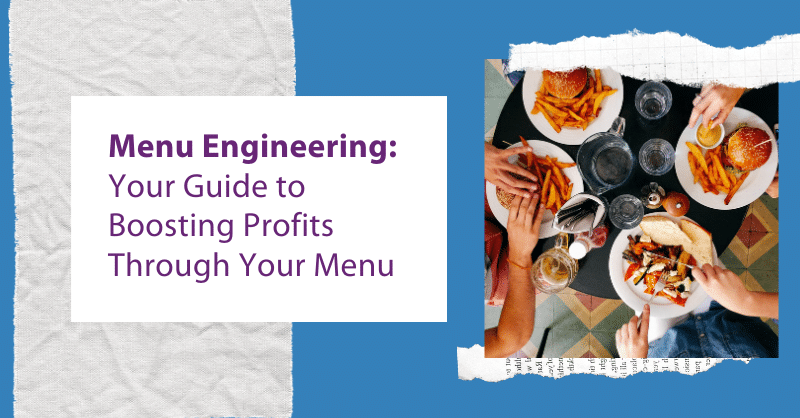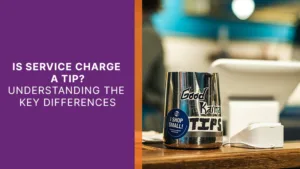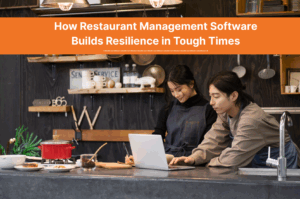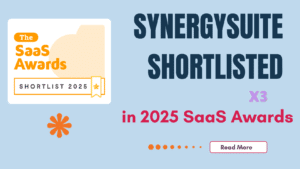Updated on: September 25, 2024
What if the secret to boosting profits is hidden in plain sight?
Sure, managing your day-to-day restaurant operations, point-of-sale systems, and back-of-house processes is important, but what if there was another aspect of profitability that you are neglecting? Let’s talk about menu performance and the concept of menu engineering. The restaurant menu engineering process is an overlooked powerhouse, and getting it right could make all the difference.
Increase your profits with data? Say hello to menu engineering.
Menu engineering is a data-driven approach to building and laying out your menu in such a way that you maximize profits. The best menu engineering starts with an analysis of your menu’s most profitable and popular items. Then, it involves designing your menu strategically to maximize profitability.
Menu engineering also has an important aesthetic element. Menu engineering isn’t just about data analytics, as important as that is. Menu engineering takes data and then presents it to the diner in a way that is logically organized, easy to read, and visually appealing.
Yes, there are very real menu psychology techniques that have proven effective for helping restaurants make more money. If menu engineering sounds a little bit sneaky, it can be, but not necessarily in a sinister way. Menu engineering is as much about optimizing the dining experience for the customer as it is about maximizing profitability for the restaurateur.
The intersection of profitability and popularity
As you know, margins in the restaurant industry are razor-thin. Every cent counts. Being strategic about menu items and even menu configuration could be the difference between steady growth or just barely making your bills.
Take off your chef’s hat and put on your menu engineer hat! To help increase your working understanding of menu engineering, try sketching a menu engineering matrix from the following description.
What is the menu engineering matrix?
The menu engineering matrix brings into account the profitability and popularity of menu items and plots them on a graph. Profitability sits along the x-axis, and popularity on the y-axis. The four quadrants on the menu matrix are broken into the following four categories: plow horses, dogs, stars, and puzzles. Let’s talk about these quadrants on the menu engineering worksheet.
What is a dog in the menu engineering matrix?
Dog menu items are low in both profit and popularity.
Customer demand isn’t there, and neither is the money making them obvious candidates for possible elimination. They are items that are ordered more rarely and have low profit margins. Dog items might include kids meals or a dish with a pricy protein. If you want to cater to children and those with dietary restrictions, it may be necessary to have a few of these options. That said, lack of sales is pointed, albeit indirect, customer feedback, so eliminating as many dog items from the menu as possible is a good idea if you want to improve profits.
What is a puzzle in the menu engineering matrix?
Puzzle menu items are highly profitable, but have low popularity.
While these items have a high profit margin, they are harder to sell. Puzzle menu items might include things like duck or a vegetarian tart. They may be more suited to those who have a more sophisticated palate or a higher budget. While more extravagant items like these might work in an upscale restaurant, if you run a family restaurant, limiting the number of these items on the menu might save you money in the long run.
What is a plow horse in the menu engineering matrix?
Plow horse menu items are low in profitability, but high in popularity.
Each singular item in this group won’t make a large profit, but you will be able to sell a lot of them. Think steak or fresh-caught fish. These are items that appeal to the masses but are still more expensive to make. So while sales might be great, you won’t make a lot per item.
What is a star in the menu engineering matrix?
Star menu items are both highly profitable and highly popular.
These are the real moneymakers. Items that fall into the star category are cheap to make, and ordered frequently. This is the sweet spot when it comes to maximizing profitability. Stars include pasta, omelet dishes, and baked potatoes. Ever wonder why breakfast diners and Italian restaurants seem to do well? They have a lot of stars.
How do you engineer your menu for maximum profitability?
- Take an inventory of your current menu items and prices to ensure pricing is correctly assigned to maximize profit.
- Plot the profitability and popularity of each menu item on the menu engineering matrix.
- Redesign and restructure your menu by removing items that don’t fit the strategy and ensure the items you most want to sell are placed in the center, top right, and top left corners of the menu.
What are some menu psychology tips?
Never forget that your customers are human beings.
This means they have thoughts and feelings and their decision-making process can be influenced by many outside factors. Some of these factors include colors, dollar signs, descriptive words, and comparisons. Most of these factors are subtle and people aren’t even aware that they’re being influenced by them. It may seem silly, but menu design matters.
For instance, people are often turned off by dollar signs because they remind them that they are spending money. That’s why it’s best to list menu prices without the dollar signs. Also, avoid using a leader line that draws attention to the price unnecessarily. Instead, focus on imagery and compelling menu descriptions.
If graphic design isn’t a strength of yours and you aren’t already doing this, consider spending a little extra money and contracting a professional to do a menu redesign for you. Skilled, professional graphic designers understand these concepts and will know very well how to organically integrate them into an effective menu layout.
Some might call this the sneaky part of menu engineering but it also adds to the customer experience. Think about it—the menu items that are most popular are most popular for a reason. Clearly people are enjoying them. Menu psychology strategies are about directing your customers to those items helps them to discover the best food that your restaurant has to offer. If those items are also highly profitable, then it’s a win-win for both of you!
Photography
What about photos? It’s best to use them very sparingly on a menu.
Why?
They take up a lot of space and can be associated with restaurants that are low-end or cheap. If it looks like you’re trying too hard to sell a certain dish, you probably are. That doesn’t mean you shouldn’t use a photo here or there. If you’ve got the juiciest, most delicious burger in town as your signature dish, it probably wouldn’t hurt to include a small photo of it on the menu.
If you do decide to put photos on your menu, make sure they look professionally done. Food doesn’t often naturally photograph well even if it looks good in real life. Hiring a professional to take the food photos isn’t a bad idea.
Colors
Have you thought about colors? Psychology has proven that bright, warm colors like yellow, red, and orange catch attention and enhance appetite. Use them strategically in your menu to catch attention and make the customer’s mouth water.
Fewer choices make for higher profits
The goal of menu engineering isn’t one-sided, menu engineering benefits do include increased menu profitability for you, but they extend to your customers as well.
Less is often more, and the burden of choice is real. Having just a few menu items is really good for you as a restaurant owner, as it enables you to better control purchasing, reduce the amount of capital tied up in perishable ingredients, and allow the staff to focus on preparing a small number of items to virtual perfection.
Menu engineering is actually really good for the customer as well. The paradox of choice in psychology actually says that the more options a person has, the more anxiety they feel in trying to make an informed decision. Feeling anxious when reviewing lots of menu options does not lend itself to customer satisfaction. It’s advisable to limit individual menu items to around seven per category.
For instance, if you sell burgers and sandwiches, it’s best to not have more than seven options for each. Effective menu engineering helps determine which burgers and sandwiches should make the cut.
Parting thoughts
The process of menu engineering and the science behind menu psychology is fascinating. There’s so much you can delve into if you’re looking to really trim down your menu, improve it, make decisions about pricing, and boost profits.And while menu engineering is key, it’s just one small part of running a successful restaurant. If you’re looking for restaurant management software to help you make more impactful decisions, we’re here to help. We wish you the best as you strive for a more efficient and profitable restaurant.
What are the strategies for menu engineering?
To make a useful menu engineering matrix, you’ll need data. Specifically, the costs of producing the individual items on your menu, what their profitability is, and how often you sell them. We have software that can help you make these data-driven decisions. You can determine labor costs, identify popular menu items, track the cost of ingredients, and track restaurant profits, among other things. You use this data to fill in the boxes on the matrix.
It’s important to remember that this isn’t a one and done process. Tastes change, competitors come and go, and your clientele can shift over time. You’ll need to regularly revisit your matrix and make adjustments to it.
Put simply, menu engineering is the process of making a visual representation of the various dishes on your menu by their popularity and profitability and then arranging your menu so that the attention of the customer is drawn to those most profitable dishes. The purpose is to boost profitability and make it easier for customers to order.
It’s also an ongoing process.
A profitable menu can become an unprofitable menu when tastes change or input prices fluctuate. Item popularity can change. Food costing averages can change. Customer behavior and customer preferences can change, meaning that the profile of your average customer can change.
Periodically reevaluating your entire menu can be tedious, but your menu engineering efforts can pay huge dividends in the form of profit improvements, more relevant menu offerings that align with customer choices and more responsive pricing strategies.






